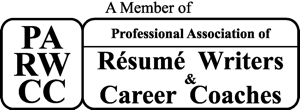iStockphoto | nadia_bormotova
Now you see it. Now you don’t. The Wall Street Journal recently ran an expose of “ghost jobs,” the gist of which is that many openly advertised job solicitations are fake news. As if the job search process isn’t challenging enough, add another obstacle designed to waste your time and effort.
The Wall Street Journal article, which refers to a study by Clarify Capital, reports that “Among those [hiring managers] who said they advertised job postings that they weren’t actively trying to fill, close to half said they kept the ads up to give the impression the company was growing,” and “One-third of the managers who said they advertised jobs they weren’t trying to fill said they kept the listings up to placate overworked employees.” But the reasons go on, and may include:
· Stockpiling candidates in case an employee quits.
· As a fishing expedition for exceptional applicants who show interest in the company (aka bait).
· To create a steady rotation of applicants in case actual new hires need to be made.
· Jobs are publicly posted due to company policies even if the person for the role has been pre-determined or will be an internal hire.
· Poor hiring logistics (more common in large companies).
· 365 days a year recruiting strategy.
Notice a reason conspicuous in its absence from the already too long but hardly exhaustive list above - hiring qualified professionals to do the voodoo they do so well. For the job seeker, ghost jobs are a labyrinth of dead ends and frustration. It is likely you’ve applied for jobs in the past that were bridges to nowhere. Unfortunately, there is no tried-and-true way to avoid the pitfalls of pursuing a ghost job.
Why would companies intentionally risk creating a negative impression among potential candidates by sending them down a rabbit hole? There is a boomerang effect as well. Recruiters and hiring managers create more work for themselves by engaging in these practices. They must engage with interested candidates or spend time creating and participating in a deceptive system designed to fill jobs at the company’s convenience, not the professional looking for immediate work and who would not spend time pursuing any position that isn’t available right now.
Nonetheless, it’s still safe to believe the majority of the job postings you see are valid – companies pay real money to post jobs on the leading boards, and they’ll want to see an ROI. If you suspect an advertised job may not be on the up and up, here are some tips that are in no way guaranteed to work but may, at the very least, help you identify suspect listings.
Read the job description. At first glance, it can be difficult to ascertain whether or not a job posting is real or not. Is the job description short on details? Vague? The more information the better.
Examine the posting date. See if the ad has a posting date. If it doesn’t, you really can’t know the truth. If it does and it’s recent that’s a good sign. However, it could be an “evergreen job,” which are positions that are always open because there is a large volume of employees doing the same job, high turnover, or some other legitimate business reason which seeks to fill positions on a rolling basis. Try your best to read the tea leaves.
Research the company. Just because it’s a Fortune 500 company doesn’t make its hiring practices above reproach. It is always a good idea to research a business before applying for a job. Mitigating the risk of chasing a ghost job is an important component of screening a potential employer.
Beware multiple job postings. Remote jobs are sometimes advertised in multiple cities but there is only one job. Hiring managers want to ensure they have as in-depth a pool of candidates from as many locations as possible so they case a wide but deceptive net.
Whack-a-Mole jobs can be ghost jobs. Adding to the confusion, you may notice identical job openings a few months apart. That means it’s a real job and a lousy place to work because of the frequent turnover or they’re harvesting applicants with no real opening. Either way, it may be a red flag or two.
Philip Roufail contributed to this article.
Scott Singer is the President and Founder of Insider Career Strategies Resume Writing & Career Coaching, a firm dedicated to guiding job seekers and companies through the job search and hiring process. Insider Career Strategies provides resume writing, LinkedIn profile development, career coaching services, and outplacement services. You can email Scott Singer at scott.singer@insidercs.com, or via the website, www.insidercs.com.






